11,104 people reached on Lassi with Lavina Facebook page
Ishani Duttagupta, Gitika Vohra and 6 others like it on Lassi with Lavina
2394 views on LinkedIn – 34 Likes
21 + 19 Likes on Instagram
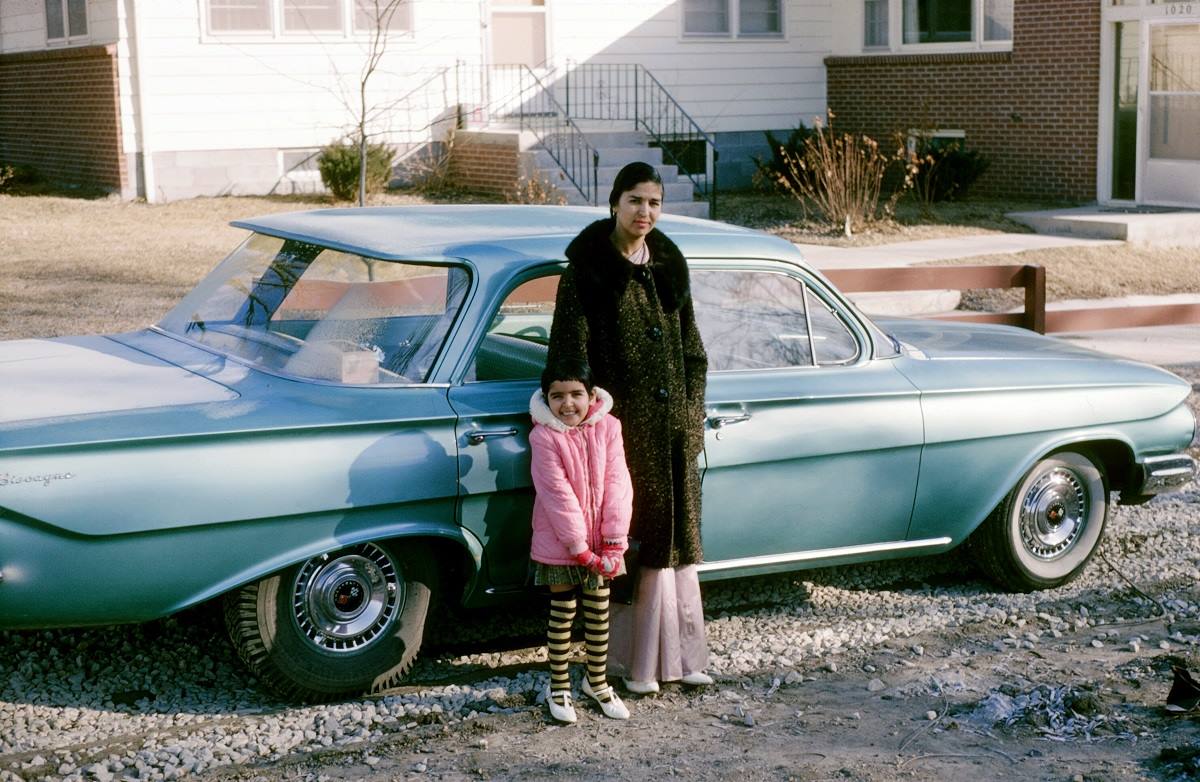
Writing the Indian-American Immigrant Love Story
From the mustard fields of the Punjab to a college town in Iowa, USA
[dropcap]I[/dropcap]f you are an Indian immigrant or the child of an immigrant, you will have special memories of your first Fourth of July, of fireworks exploding in the night sky when it was not even Diwali.
As you left India forever and your car had sped to the airport, the black Indian crows cawing away in the morning sun and the sweet remembered alley-ways receded into the past. America was the new reality, the future – perhaps your parents called it ‘Amreeka’ but they had hundred percent wrapped their dreams, their aspirations around this Promised Land…
What can you, an immigrant who came with nothing but a battered suitcase filled with bits and pieces of a disappeared life, offer this new country? What gift can you give America on its Independence Day celebration?
[dropcap]H[/dropcap]ere is Sarvinder Naberhaus’ (nee Bal ) gift – an immigrant child’s clear-eyed view of what this country means to her, decades after she came to America as a four-year-old from the Punjab. ‘Blue Sky White Stars’ (Dial Book for Young Readers) is a lush picture book for children with sparse poetic text by Sarvinder and with amazing images by noted artist Kadir Nelson who has several New York Times best-selling books to his credit.
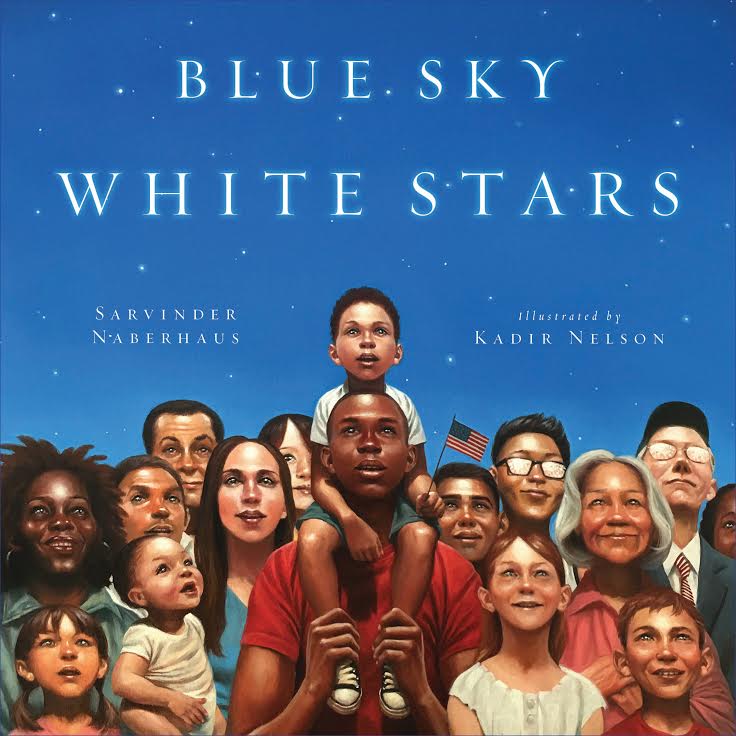
[dropcap]I[/dropcap]t is a heartfelt tribute to the American flag and all that it stands for – ideals, people and country. ‘Blue Sky White Stars’ has received 4 starred reviews from Kirkus, PW, SLJ, and Booklist and is on the Recommended Reading List /Best Books List of 2017, including Amazon, Publisher’s Weekly, Booklist, and School Library Journal.
Sarvinder grew up in Iowa, far from the mustard fields of the Punjab. Forging her own American identity she became an elementary schoolteacher and media librarian before putting words on paper to tabulate the American dream. In the process, she created an American life, married Tom Naberhaus and raised three children Daniel, Joel and Nikole – beautiful Americans with a touch of India in them. “My blue-eyed son does not look as Indian as my brown-eyed son or my hazel-eyed daughter, and he embraces it,” says Sarvinder. “I think when they are my age they will all look back and be very thankful that they had my mom and dad and their Punjabi-Indian roots.”
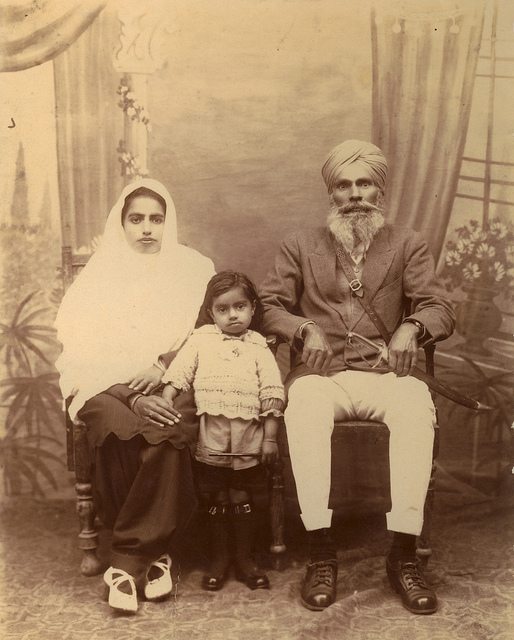
[dropcap]T[/dropcap]o go back to the beginning, Sarvinder’s story began with her great-grandfather Boota Singh Bal who actually boarded a ship to come to America – but changed his mind and disembarked. Years later, it was left to his grandson, Sarvinder’s father, Harpal Bal, to pursue the American Dream by coming to Iowa State University to obtain a degree in veterinary medicine, and his family joined him in 1965.
“He was a Vet Med student at ISU and was living on a teacher’s assistant’s salary, trying to support us,” recalls Sarvinder. “His major professor was very helpful and invited us over for Thanksgiving every year, and helped him get a permanent visa to the States. That isn’t to say there wasn’t a lot of racism. My dad tells stories of T.A.’s from India working until midnight and getting half the pay as their European peers, who worked 8-5. That was accepted back then.”
Being just four when she and her siblings came to America, Sarvinder has scant memories of India. “I didn’t go to school there so I never learned a lot of things about the language and then started losing my ability to pronounce words correctly the more I spoke English. I remember a few things, but not much about the people. So when we went back to visit in 1974, these people were all strangers to me, although they were my family.”
For new memories made, old ones sometimes take a backseat. You win some, you lose some.
[dropcap]A[/dropcap]s Sarvinder says, “Culture shock is a good word because coming to America was like being dunked in ice water. All your senses wake up. So most of my memories start from the moment I set foot in the States, like they are etched there. I don’t think people realize how hard it is to move 7000 miles across the world. You are alone, at first. And you don’t really have a lot of backup if something goes wrong.”
Her childhood is woven out of memories of America – she remembers going for drives on Sunday afternoons in her small Iowan town when everything was closed: You had to plan ahead and there wasn’t much to do beside spend time with your family, and usually outdoors if it was good weather. She recalls: “We would go to Ledges Park with swimsuits in tow, and watch minnows in the creek and scream happily when cars drove over the fjord and splashed us. We would bring picnic baskets and eat lunch at the park.”
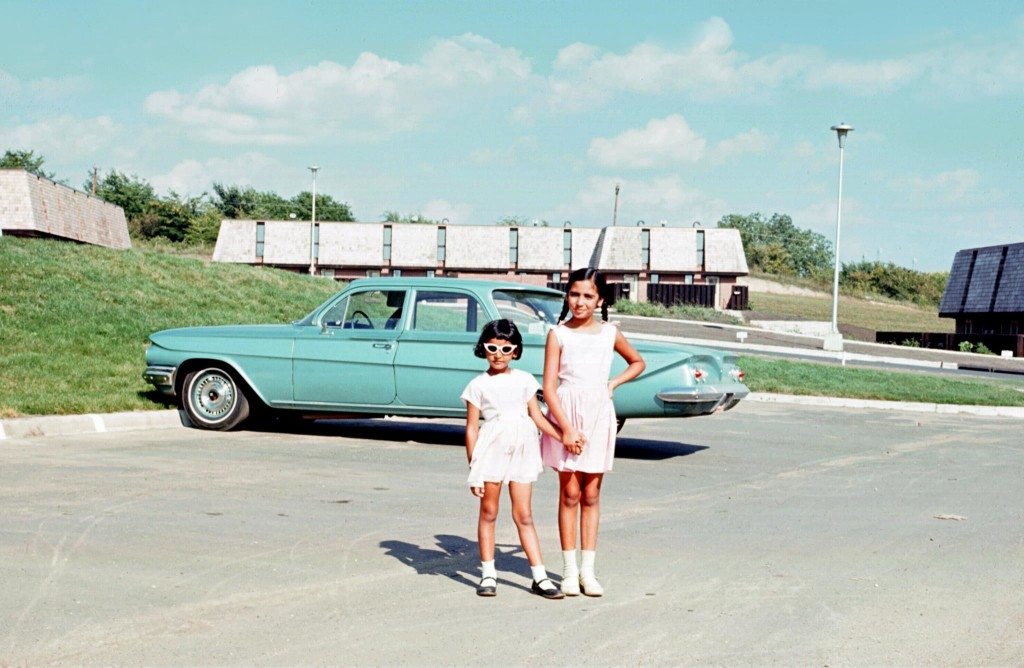
[dropcap]S[/dropcap]he remembers that on vacations her mother would make rotis ahead of time, pack some achar and yogurt along, and they would stop at the rest stops under a shade tree to eat: “The food tasted so much better when you were on the road. There was something comforting about bringing it along and stopping at your convenience to eat. At night, you didn’t make hotel reservations ahead of time. You stopped driving when you were tired and you found a motel. If you were lucky you found one with a pool and maybe made some friends along the way.”
For breakfast, they would stop at a rest stop and take bacon and eggs out of the cooler. They had borrowed a Coleman camp stove and boiled water for tea and scrambled eggs and fried bacon. She adds, “Once we met a nice guy on a motorcycle whose father lived in Des Moines and invited him to join us. Back then people hitched rides. It was the era of flower children.”
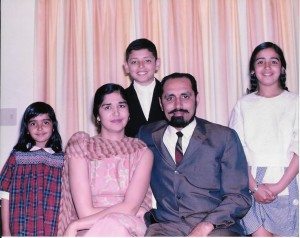
[dropcap]B[/dropcap]eing one of the few Indian families in a small American town was hard but they were fortunate in their neighbors, especially one who would drive her mother around and teach her about sales and other ways to stretch their money. Sarvinder says, “We were poor because we came over on borrowed money and my father was a Ph.D. student – and students are poor. And we were different. It’s not easy standing out all the time. Coming to America took away the security of community and family that is taken for granted when in your homeland. So I guess standing out is something you become familiar with, but never really get used to.
It was difficult being the only non-Caucasian in the entire school. I always felt like I was in a race, but the starting line was much further up ahead for everyone else, and that I was always behind, trying to catch up. Everyone seemed to be in on a secret– how the culture worked. I finally feel like I am catching up, maybe even getting ahead.”
Growing up, her family did have a community of Indian friends who all went on to become extremely successful and have now spread over the US: “Since we lived in a college town, dear friends left once they graduated. Another hard reality because they were our family. We still feel a special kinship to them, similar to what soldiers feel after war. It was a struggle for survival. It was painful, and the price you paid for the American dream.”
Asked if in her growing-up years she encountered racism, she says, “In the early 60’s you can bet there was racism. I think it was harder for my older siblings, who were at the top of their class before moving here, and were judged before anyone ever saw what was inside of them.
Nowadays, there is a growing Indian community. Because my father is so social, a lot of people know him, but we keep mostly in touch with our old friends who supported each other through hard times. I have my own family now and most of my friends are not of Indian heritage. My close friends are my neighbors and the writers and illustrators who are interested in publishing stories for children. We share a camaraderie that way.”
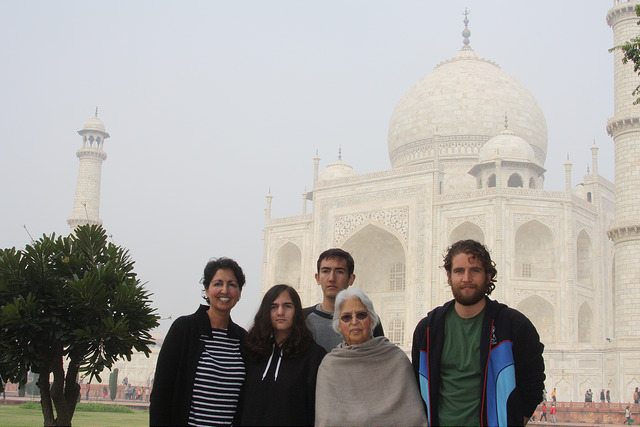
[dropcap]M[/dropcap]ost of her extended family has moved to the US or Canada so there is not such a pull for India. She explains: “I can’t say that I miss India, but I do miss the culture and the warmth of the people. They don’t seem to have walls up or formalities. Maybe I just feel more comfortable, it’s hard to tell. But I do wonder how I would be different if I had grown up in India. The immigrant journey involves pain, sacrifice and hardship to some extent. Of course the gamble is that the payoff would eventually outweigh the struggle.”
While the second-generation often negotiate and carve out their own relationship with being American, it is usually harder for their parents, the immigrants who still hear the beloved old Saigal numbers in their head and remember the dust and romance of childhood train journeys and the sweetness of stolen mangoes from neighboring orchards. That will always be a part of their reality. So do her parents miss Punjab and how do they negotiate between two countries and two loyalties – their adopted country and the home country?
“I asked my parents if they missed Punjab. My mom said at first she really did, but now she is thankful that they live in the states. She is truly an American citizen,” Sarvinder says. “With my mom and dad living in town, and us going over all the time for my mom’s Indian food – she is the best cook in all of Iowa and I’m very serious – the kids get plenty of doses of the Indian culture.”
As Indians, do they experience racism at all? In their college town, people are from many different countries and there’s only one other Sikh family. Indians are not a homogeneous lot and are great at adjusting and adapting. She says: “My dad hasn’t worn a turban since he first moved here and my mom left her hair short after she had cancer, so I don’t feel our family deals with blatant outward racism as much nowadays. So that is good that American attitudes have shifted in that direction, as opposed to when we were kids and we were called names outright.”
[dropcap]W[/dropcap]hich brings us back full circle to ‘Blue Sky White Stars’ and the diverse, multi-colored America it celebrates.
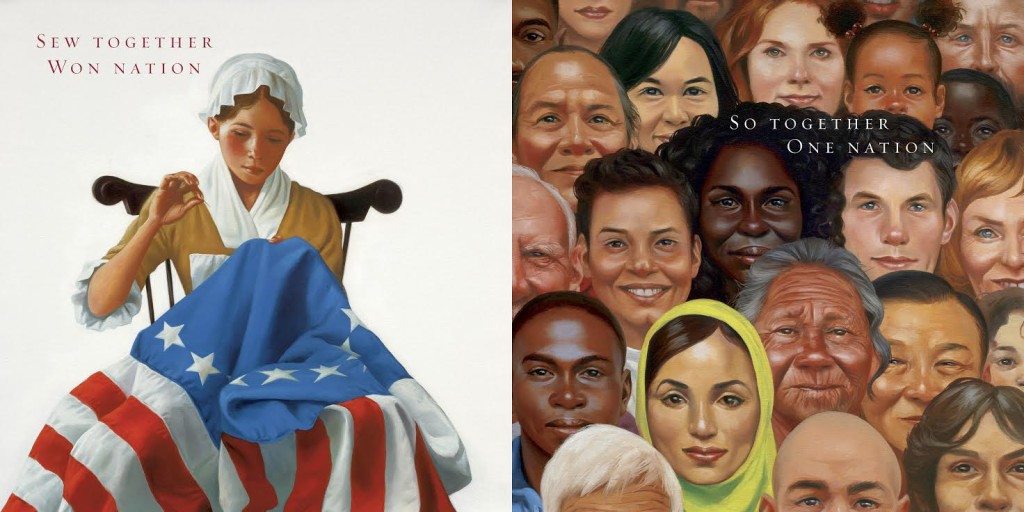
Childhood kindnesses stay with one, especially in a new alien country. When Sarvinder was five years old she met a white-haired woman with a bouffant hairdo who handed her a book called ‘Chester the Little Pony’. She recalls: “My mom read it to me over and over until it was tattered and had to be thrown away. Ironically, the only thing I own that came over on the original journey is a primer with children’s stories in it. As a children’s author, that is what is left of my past -,children’s stories!” Indeed, stories have became Sarvinder’s way of deciphering America. (Her earlier children’s book was ‘Boom Boom’ and her new book ‘Lines’ is out in August.)
[dropcap]H[/dropcap]er great-grandfather and her father both had an American dream. She says, “I I too have pursued my dream to become a children’s author. People ask me how I managed to get Kadir Nelson as my illustrator. The obvious answer is, my editor. The real answer? God. Fate. Purpose. Hard work. Fulfillment of a dream. The chasing of a dream.”
Does she think it’s really important to start with the idea of America right in one’s childhood, with a picture book like the one she and Kadir Nelson have created? What reactions has she had from parents and kids?
She says, “I don’t think you have to teach children about their country, because it will evolve with their experiences. I have had very positive reactions to the book. People tell me it brought them to tears. That is why I write, for others, so that is the highest compliment! My best experience so far was going into an elementary classroom and having kids tell me what they saw in the illustrations, as their America. I love that they taught me to see it with a child’s eyes. I love seeing America through their lenses.”
[dropcap]F[/dropcap]inally, I asked her what she thought of Trump’s America. Is there room anymore for the American Dream or even the immigrant?
She gave it some thought and responded: “I think the American Dream is about pursuit of Freedom. That is why we all came here and why we want to come. That is what the people in this book, so beautifully drawn by Kadir Nelson, lived and died for – the Revolutionary War, Civil War, Civil Rights March. That is what has taken this nation to the heights it has risen to – the moon! That is how high Freedom has taken us. That is also our struggle with other nations – we believe in the right to life, liberty and the pursuit of happiness for everyone. What wise and wonderful words, with the ultimate prize, Freedom.
So I believe strongly that the president should defend and protect our freedom. I think it is his responsibility to America to do so. As an immigrant, I came through the channels necessary to achieve citizenship. My loyalty lies to this country, although I very much love India. So I do believe that the American dream is alive and well in America today.”
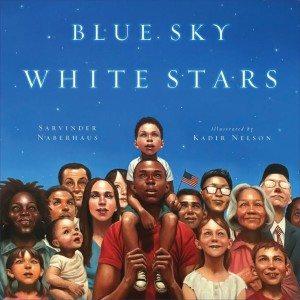
[dropcap]S[/dropcap]arvinder’s gift of ‘Blue Sky White Stars’ speaks to the very essence of America, to the healing and unity of this great nation.
For those of us who thought the American Dream comes as a freebie, Sarvinder Naberhaus cautions: “There is a price-tag on the American Dream. Most people don’t know it has a price and they have no idea about the cost of achieving it. I suppose one day my descendants will realize the sweat and tears that paved the way for them. Hopefully they will reach out to the tender young immigrant who sets foot on American soil.”
Does your family have a story of immigration? Please do share with readers in the comment section!

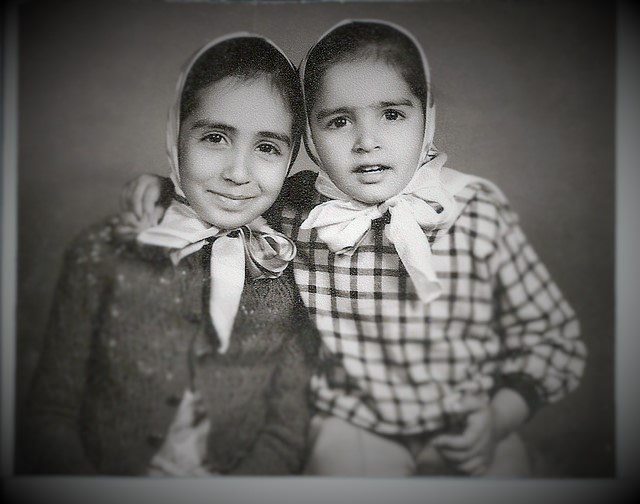
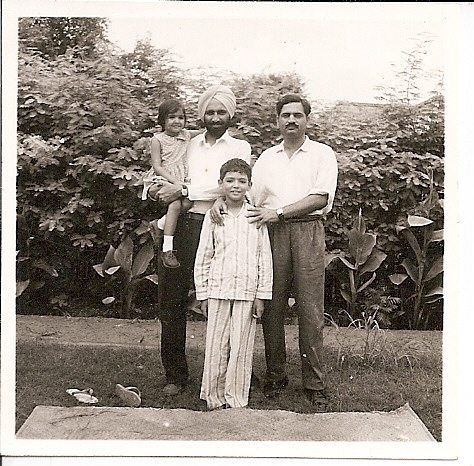
14 Comments
Thank you Mr. Bahadur. It was good to have fellow Indians and good friends to walk beside on this journey.
Jan Paschal, thanks so much! I first saw the book about the American flag and was so touched by it and the fact that it was written by the daughter of Punjabi immigrants – after that it was connecting the dots!
Jan Paschal via Facebook
What a beautiful story! Lavina Melwani, your posts always shine so much light – and this one is especially moving as we get ready to celebrate the 4th of July.
Shyam Bahadur, will definitely pass your comment to Sarvinder. I think her experiences have moved many readers.
Sarvinder, a good narrative of an immigrant and very realistic. Wonderfully depicted indeed. Reading it brings back the feelings most of us experienced while departing from India for the first time to the unknown future.
Sarvinder, it was a pleasure working with your words and experiences and I think everyone has loved the lovely old photographs – they tell such a wonderful story just on their own!
That’s right Pam – and it’s a trial by fire that every immigrant goes through.
Thank you Lavina for letting me tell my story and then taking my words and weaving them so well. Happy 4th!!!
To move through and toward the unknown takes courage.😊
Thank you Sumit – enjoyed writing it as the story of immigration is fascinating!
Comment via LinkedIn
Sumit Malik
Beautifully woven, very well told
Thank you – appreciate your comment! Immigrants have really contributed so much to America.
Comment via LinkedIn
Ashish Tekchandani
Excellent insight and read!